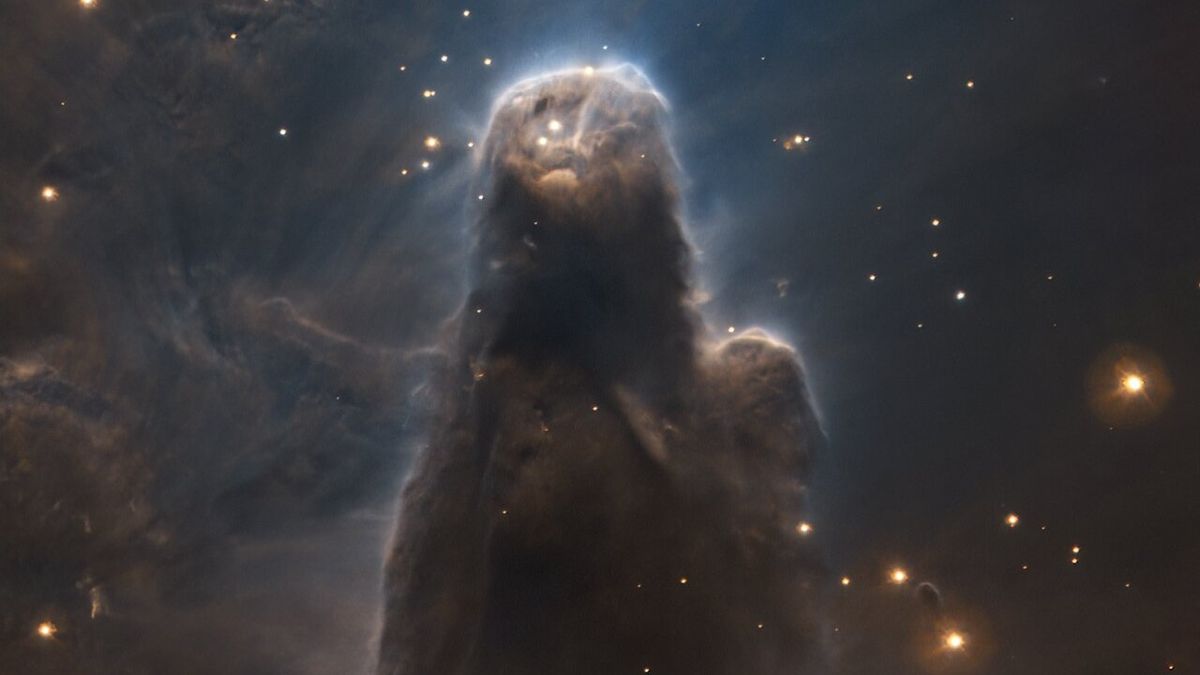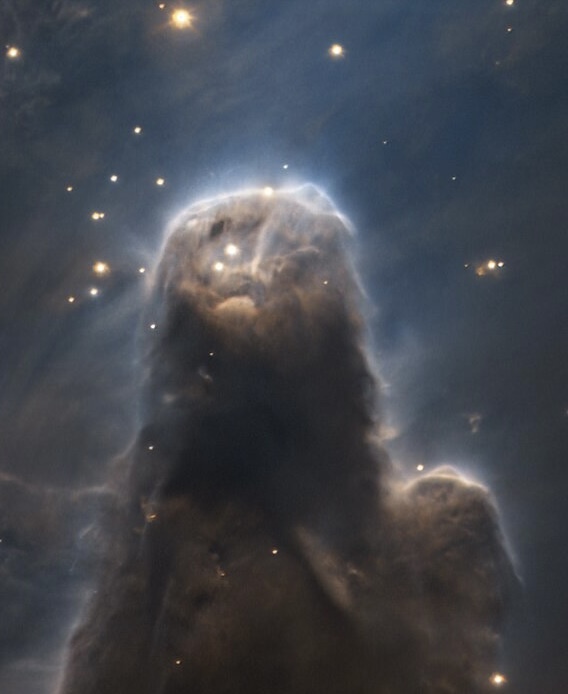
A dramatic new image of the Cone Nebula shows the pillar-like cloud of cold, star-forming molecular gas and dust in unprecedented detail.
The nebula gets its name from its conical shape and is located in the turbulent, 7-light-year-long region of NGC 2264, which is a site of intense star formation located around 2,500 light-years from Earth.
Because it is relatively close to our planet, the Cone Nebula has been well studied., However, previous images lacked the incredible detail seen in the new observation, made earlier this year by the Very Large Telescope (VLT), located in the Atacama Desert of northern Chile, according to a statement from the European Southern Observatory, which operates the telescope.
In the VLT image, the nebula — which is found in the constellation Monoceros, "The Unicorn" — takes on a dark and impenetrably cloudy appearance, making it look, fittingly, almost like a mythological creature itself.
NASA's Hubblesite colorfully describes the Cone Nebula as "resembling a nightmarish beast rearing its head from a crimson sea."
In the image, captured with the VLT's Focal Reducer/low dispersion Spectrograph 2 (FORS2), hydrogen gas can be seen in blue and sulfur gas in red. Rather than appearing in their usual blue, young stars in the nebula look almost like golden sparkles.
The Cone Nebula is a striking example of the pillar-like clouds of cold molecular gas and dust that serve as the raw materials for star birth. This pillar shape forms when infant bright-blue stars give off intense ultraviolet radiation and stellar winds that blow material away from their vicinity. As this material shifts, it pushes on gas and dust farther from these young stars, compressing it into dense, tall pillars.
The young stars of NGC 2264 have been eroding material in this region over millions of years, forming the dense and dark Cone Nebula that points away from NGC 2264.
According to Hubblesite , the tendrils of gas in NGC 2264 will eventually erode so much that only the densest regions will remain. These areas of dense gas and dust will become the sites of further star formation and may eventually birth planets.
ESO released the new image of the Cone Nebula to celebrate the 60-year anniversary of its. ESO selected the picture to be released as part of a campaign marking the five countries signing the convention to create the organization, which now has 16 collaborating member states and organizations.

Dramatic photo shows ominous Cone Nebula like never before
A dramatic new image of the Cone Nebula shows the pillar-like cloud of cold, star-forming molecular gas and dust in unprecedented detail.
Location of the Cone Nebula in the constellation of Monoceros:

Wide-field view of the Cone Nebula region of the sky:

Hi-res versions:

ESO’s 60th anniversary image: the Cone Nebula as seen by the VLT
ESO’s 60th anniversary image: the Cone Nebula as seen by the VLT

Wide-field view of the Cone Nebula region of the sky
Wide-field view of the Cone Nebula region of the sky






/cdn.vox-cdn.com/uploads/chorus_asset/file/22983665/SRA1061_comp_v023.1041.jpg)


